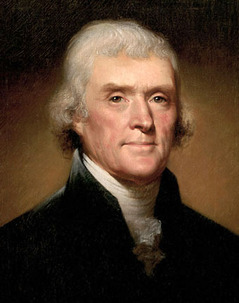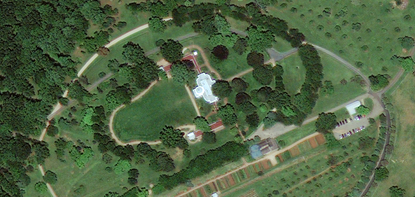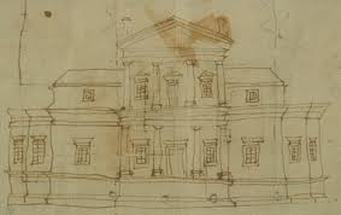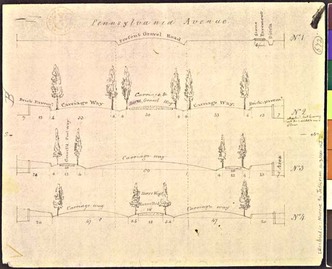|
Circa 1996 - Mark Reynold, Landscape Architect Our third President was a veritable renaissance man, a genius who achieved noteworthiness at all her attempted. Farming, architecture, music, classical literature all captured his spirit at one time or another yet many Jefferson scholars concur that gardening was his strongest passion. He is also known as one of our country's first landscape architects. He read current books and philosophies on the trends, visited European landscapes and developed the grid system of land division for our continent. His home that he designed, Monticello, was a grand experiment, a place for Jefferson to apply his theories as he wished. Jefferson was born into the plantation life of rural colonial Virginia. Growing up, his father taught him the skills of surveying, map-making, and topography interpretation. Later he inherited surveying and drafting equipment that are still on display today at Monticello. In 1768, he chose the site for Monticello. It was on the Rivanna River, an estate of 2,650 acres, site of his previous home, Shadwell. Shadwell burned, and Jefferson did not regret it, for it had been of traditional colonial style, not to his taste. Highly critical of architecture, Jefferson felt the chief merit for architecture in Williamsburg was that it would burn easily. At Monticello he used classical instead of colonial design, but his most radical concept involved development of the land. In the words of Alexander Pope, he " consulted the genius of the place" to determine the natural advantages of the site. Most notably, the house was to be set on a mountaintop and utilize the grand view. This was a move forward toward the more philosophical and romantic styles currently in European vogue. It was a move away from symmetry and geometry that most Americans were still employing. In 1769 the mountaintop was leveled and trees were set out even before the house was started. In 1772 the "roundabouts" were begun. Another innovative idea, Jefferson designed a series of roads to circumnavigate the mountaintop solely to enjoy the woods and the view. In 1774, Jefferson layed out his vegetable garden on the south slope, with the orchard and vineyard on the terrace below. Jefferson used the orchard to organize the hillside and act as a natural transition to the woods below. Paris became home to Jefferson in 1784 and he became infatuated with European architecture and culture. He was Minister to France and John Adams was Minister to England. They met in London to tour English Gardens and to study the new landscape style, "Le Jardin Anglaise." So popular, Catherine the Great imported English gardeners to design English naturalistic landscapes in St. Petersburg, Russia. Jefferson returned home to Monticello in 1789, anxious to redesign with all his new ideas. Unfortunately, he had to spend time in Washington after his election to the Vice-Presidency under George Washington in 1794. In 1801, he was elected to the first of two terms as President. For relaxation and escape, he sketched architectural plans, designed garden benches and shopped at Georgetown plant nurseries. He often had cartloads of plants sent home to Monticello with detailed maps for installation by his Italian gardener, Antonio. He corresponded with Antonio and knew when and where a tree died or was planted at Monticello. He ordered the planting of grapevines from South Africa, Burgundy, Bordeaux and Champagne, all in the hopes of making great American wine. During this time he also began landscape plans for the White House to be done in the new romantic style. Plants Jefferson placed and his designs can still be seen today.
At the top of Jefferson's mountain, he layed out a walk called the "Serpentine", a curving path above the first roundabout. There he layed out perennial plants that seem common today but were quite exotic for colonial America. They included marigolds from Africa, Dutch tulips, hyacinth, globe amaranth, bellflower, roses, lilies, crown imperial, and irises. One of Jefferson's greatest legacies was begun in 1817. At age 74, he designed the grounds and buildings for the University of Virginia at Charlottesville. In the classical style, it was his "Academical Village." Through a telescope, he observed construction from his mountaintop, miles away. Jefferson died on July 4th, 1826 at the age of 83.
0 Comments
Leave a Reply. |
AuthorsCurrent and former staff members have contributed to our newsletter over the years. Now the articles are available to view here on our blog Categories
All
|
© 2024 Ski Landscape Corporation - Website by Day Design





 RSS Feed
RSS Feed